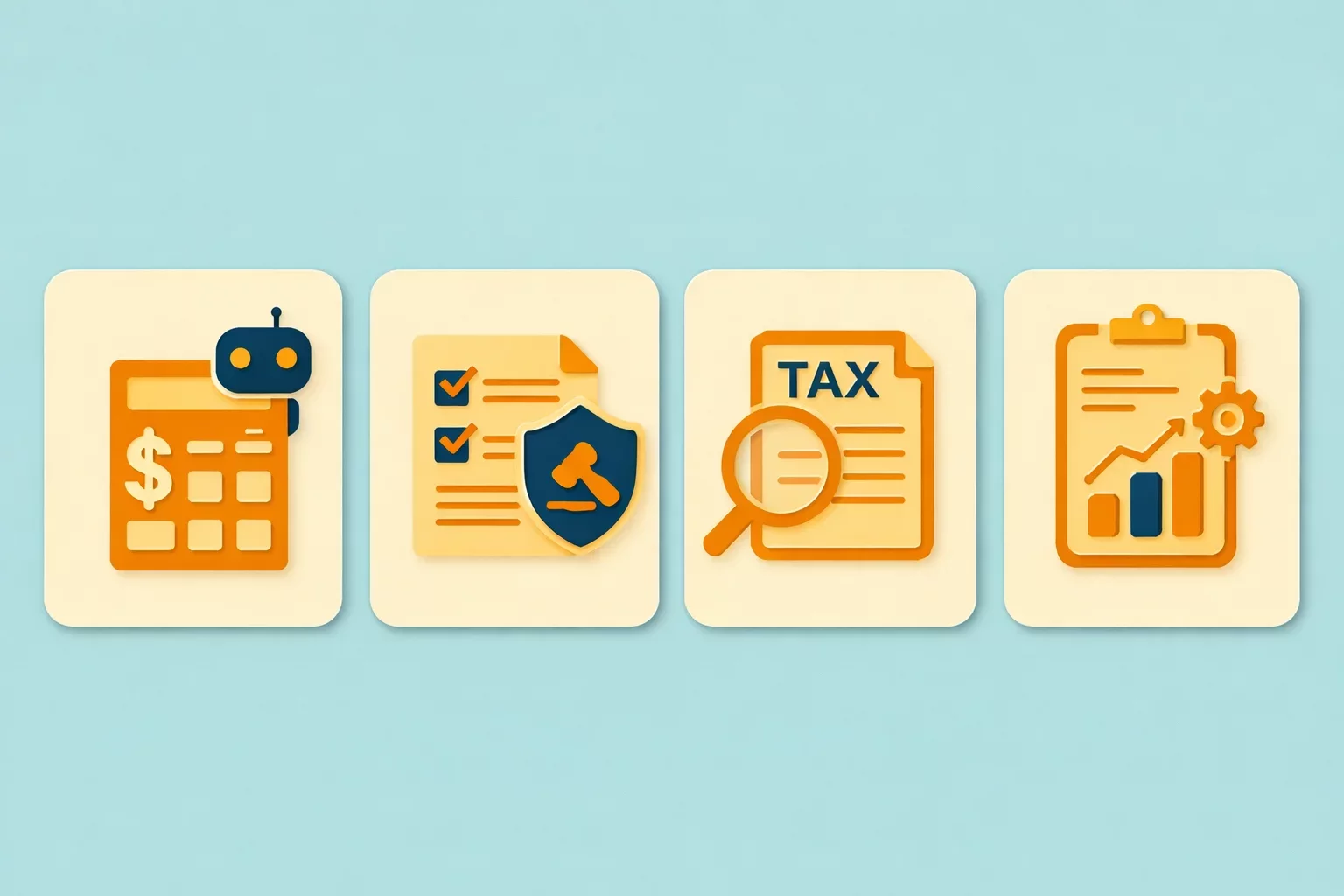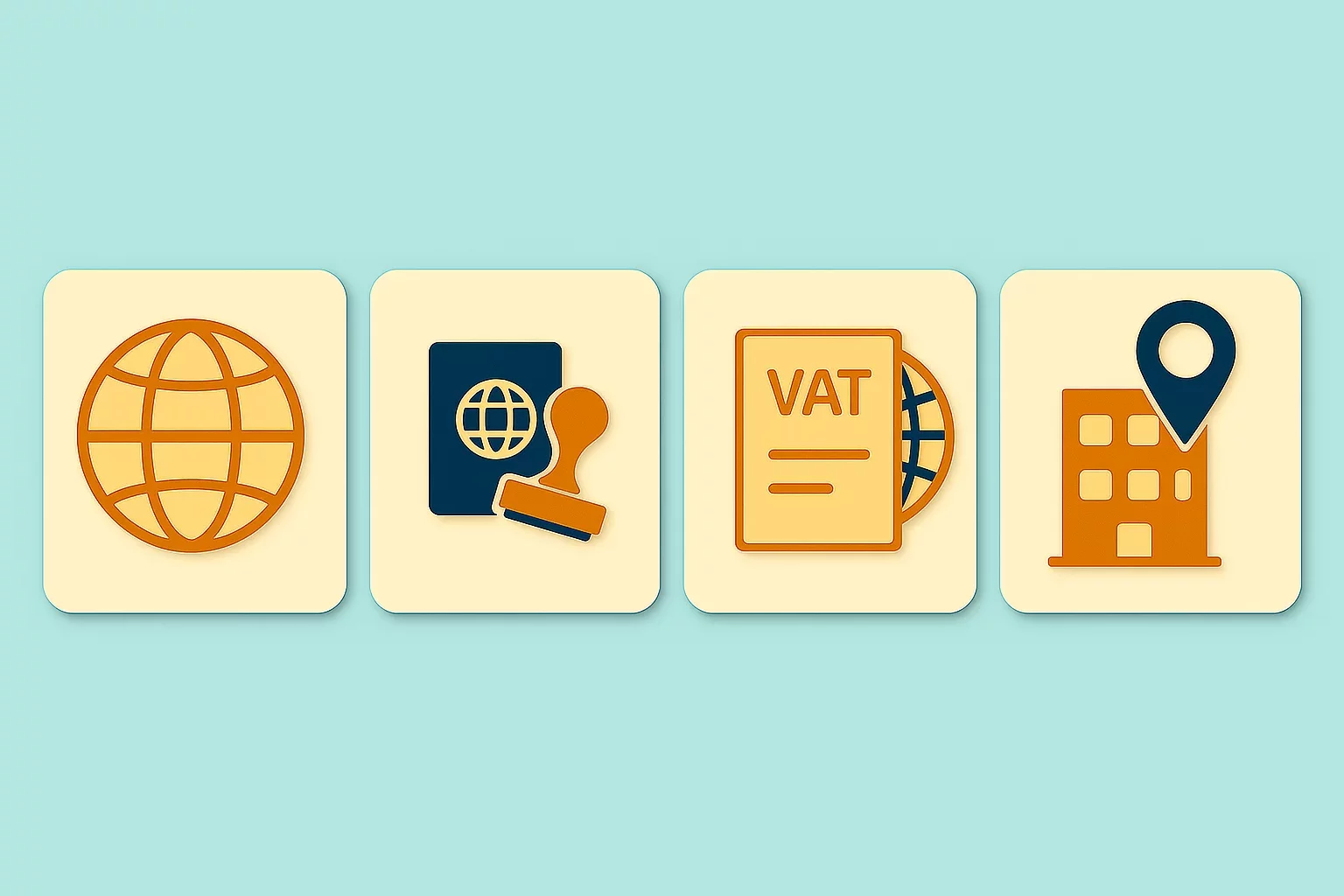How to Troubleshoot VAT Number Validation Issues Easily
Did you know that over 15% of VAT number checks fail every year, mostly because of small mistakes like typos or wrong country codes? VAT check failure statistics. When a VAT number does not validate, your transaction can get delayed, invoices may go unpaid, and you might even face legal trouble if you work across borders. For businesses trading in the EU, smooth VAT validation is key, but it can feel like a headache when numbers keep failing.
Have you ever found yourself stuck, wondering why your VAT number won't go through or why the system says it's incorrect? The pain is real for business owners and accountants. One wrong digit can halt a sale. Sometimes, the problem is with the VIES service, not your number at all. Or maybe your VAT registration isn’t set up for cross-border trade and nobody told you.
In this guide, you'll learn simple steps for fixing VAT number validation issues so you can get back to business fast. We’ll cover:
How to spot and correct input errors in your VAT number tests
Ways to check if a VAT number is really registered and valid for cross-border deals
How to handle outages or problems with the VIES EU validation service
Tips for solving tech hiccups with your platform or e-commerce store
What format your VAT number should have, and how to check EU Commission guidelines
Keep reading to solve mistakes quickly and protect your business from VAT headaches.
How to Troubleshoot VAT Number Validation Issues Easily: Step-by-Step
Step #1: Double-Check VAT Number Accuracy
Start by confirming every single character of the VAT number you are entering. This means checking the country code at the start, like DE for Germany or IT for Italy, and looking for hidden mistakes such as typos, extra spaces, or wrong letters. Even a small formatting slip can lead to failed VAT validation and wasted time. We at VATabout have seen dozens of cases where a missed letter held up an entire payment. Typing the number directly from a document? Try copying and pasting from official tax records instead. It sounds basic, but according to recent statistics, over 15% of VAT rejections are caused by copy errors or missing characters VAT check failure statistics.
Quick tips for reducing mistakes:
Always use the official country code.
Avoid pasting extra spaces or characters.
Store correct VAT numbers somewhere safe to avoid re-entry errors later.
Step #2: Confirm VAT Registration Status and Eligibility
Next, make sure that the VAT number is not only valid, but also registered for your kind of transaction. Not every VAT number works for international sales. Some are only set up for local use. We once had a client trying to invoice partners in Spain, only to learn their German VAT was domestic-only. A VAT number might show as ‘invalid’ if it is not registered for cross-border trade. Contact your client’s or your own tax office to verify if the number is eligible for international business. Always ask for written confirmation if in doubt, so you have a record in case of future audits.
If you want a refresher on VAT registration and compliance, check our complete guide to VAT registration and compliance for a thorough overview of requirements by country.
Step #3: Check VIES Service Availability
Sometimes your VAT number is fine, but the check itself fails because the VIES system is down. VIES (VAT Information Exchange System) is the official EU service for checking VAT status. If the VIES website is offline or overloaded, your VAT tests will fail every time, no matter what. Before you panic, visit the VIES page and check if there’s a service alert. If there is, your best move is to wait and try again later. Bookmark the VIES status report page for easy access, so you do not scramble during urgent periods.
Step #4: Resolve System or Platform-Specific Issues
Sometimes, the problem is closer to home. Check your own software settings, e-commerce platform, or ERP solution. Are VAT fields enabled for customers? Is your store syncing updated VAT numbers to all locations? Regularly testing your platform’s VAT features can catch glitches early. A common frustration is that a working VAT number still fails if your system uses old records or caches outdated data. The fix can be as simple as clearing your cache or updating your records right after you make changes.
Common platform-related VAT issues:
Outdated VAT records not syncing across locations.
VAT plugin or module not updated.
Cache or cookies storing old VAT data.
Step #5: Ensure Format Compliance with EU Standards
Finally, remember that each country’s VAT number format is unique, and only numbers following the correct structure will pass EU vat validation. Always review the latest guidelines from the European Commission, and run manual checks if your automated tools throw errors. If you skip this, you risk blocking valid customers from cross-border sales. Our team at VATabout recommends using trusted online tools to double-check the VAT number format before you close international transactions. You can find official country-by-country formats directly on the European Commission’s site or use VIES for quick lookups How to check and validate EU VAT numbers.
For more on how to perform VAT number checks and what to do when a number fails validation, see our VAT number check tool and guidance.
Table: Common VAT Number Formats by Country
Country | Example Prefix | Example Format | Length |
|---|---|---|---|
Germany | DE | DE123456789 | 9 |
France | FR | FRXX999999999 | 11 |
Italy | IT | IT12345678901 | 11 |
Spain | ES | ESA1234567Z | 9 |
The key takeaway: Use official tools and always validate format before processing orders.
By following these five steps, you can spot and fix most common VAT number validation issues before they interrupt your business. The good news? Each fix costs nothing more than a closer look and a bit of preparation. And if you ever feel stuck, revisiting these basics can often save hours of back-and-forth with tax authorities. For more hands-on advice, check real-world troubleshooting stories and tips at VATabout.
Best Practices for Smooth VAT Number Validation
Solid practices make VAT number validation quicker and safer. Small errors cause big headaches. At VATabout, we have seen how one good system can save you from lost sales, tax audits, or endless back-and-forth. The best approach? Keep your VAT checks simple and regular. Here’s what we recommend for making validation easy every time.
Always Validate VAT Numbers Before Any Transaction
Make it a rule to validate VAT numbers before processing orders, especially for EU cross-border sales. Why? Because skipping this step opens the door to rejected invoices and lost tax credits. Our team has dealt with cases where payments stalled for weeks simply because someone trusted a number without checking. The good news? Official tools like VIES let you confirm numbers in seconds for free. Don’t risk it. Always check first.
Keep Your VAT Registration Records Up to Date
Old records create confusion and slow you down. We recommend businesses maintain up-to-date VAT registration data for all customers and suppliers. This means updating your database as soon as partners get a new VAT number or change theirs. A simple spreadsheet or CRM note works fine. Skipping updates can lead to repeated rejections and the dreaded “invalid VAT” email — something we have seen more times than we’d like. Set a calendar reminder to review this info at least every quarter.
Train Your Team Regularly on VAT Input and Format
Mistakes often come from team members not knowing current rules. That’s why training matters. Regularly teach your staff how to spot VAT input errors and follow country format guidelines. We found that quick refresher courses — think twenty minutes, twice a year — cut validation failures in half for many clients. Include basic examples: where the country code goes, common tricks for checking typos, and what to do if a number fails. This small investment pays off fast.
Use Official Validation Tools Instead of Third-Party Automation Alone
Automated platform checks are handy, but don’t rely on them alone. Whenever possible, validate VAT numbers using official tools like the EU’s VIES system. We have run into cases where e-commerce plugins lag behind updates or miss new VAT format rules, leading to sales stalls or non-compliance. The VIES website stays current and is the standard for authorities across Europe. This method protects your business from legal trouble and unhappy customers How to check and validate EU VAT numbers.
Monitor VIES Service Status During Busy Periods
Heavy traffic or tech glitches can make the VIES VAT validation service go down for minutes, or sometimes hours. Don’t get caught off guard. If you sell across borders, get in the habit of checking VIES status, especially before sales spikes or end-of-month reporting. We recently spotted a whole batch of “validation failed” orders—turned out VIES was down, not the numbers. Create a quick bookmark to their status page and save yourself stress.
Store Validated VAT Numbers Safely and Restrict Changes
Once you validate a VAT number, keep it safe. Restrict who on your team can edit stored VAT info. Random changes or accidental edits lead to confusion and more errors. We suggest double-locking access: let one or two trusted staff handle updates and keep a changelog. This extra step also helps if tax authorities want proof that a number was valid at the time of sale.
Contact Tax Authorities Quickly for Registration or Eligibility Issues
Sometimes you hit a wall: a number looks right, passes the format check, but fails validation anyway. In these cases, don’t waste time guessing. Contact the local tax office or tax authority as soon as possible. They can confirm registration status, look for restrictions, and help you fix eligibility issues fast. Saving an email record from their response might come in handy during an audit or dispute. Speed matters. If you act quickly, you can prevent bigger problems later VAT check failure statistics.
Review and Test Platform VAT Settings Regularly
Platform glitches cause more VAT headaches than most people realize. Blocked fields, syncing issues, or outdated plugins can all prevent valid VAT numbers from passing through. Have your IT or admin team check VAT field settings every time you update your website or store software. Try a couple of test entries with sample numbers from official lists. We learned this the hard way after a routine site update dropped VAT checks for two weeks — slow, silent chaos. A little testing up front keeps business moving.
The key message? VAT validation does not need to be scary or complicated. Sticking to these habits makes your accounts cleaner and your sales smoother. And remember, proactive checks help you avoid those pesky last-minute VAT surprises.
Final thoughts
VAT number validation does not have to slow down your business. When you double-check formats, use official tools, and keep records up to date, you avoid common mistakes that cost time and money. Simple routines like regular staff training and platform tests help prevent failed sales and tax headaches. By following these steps, you keep your VAT checks easy and protect every transaction.

Featured Insights

Angola’s E-Invoicing Mandate: Phased Implementation Continues Into 2026
🕝 December 10, 2025
VAT Deduction and Business Succession: When Do Advisory Costs Serve the Company’s Interest?
🕝 December 8, 2025
Europe’s Plastic Fiscal Shift: Why Italy’s Plastic Tax Now Starts in 2027
🕝 December 3, 2025
The Decline of Low-Value Import Exemptions: Closing Gaps in Cross-Border E-Commerce
🕝 November 20, 2025More News from World
Get real-time updates and developments from around the world, keeping you informed and prepared.
-e9lcpxl5nq.webp)
























-7xdqdopxl6.webp)



-a9bz8kz2cs.webp)































